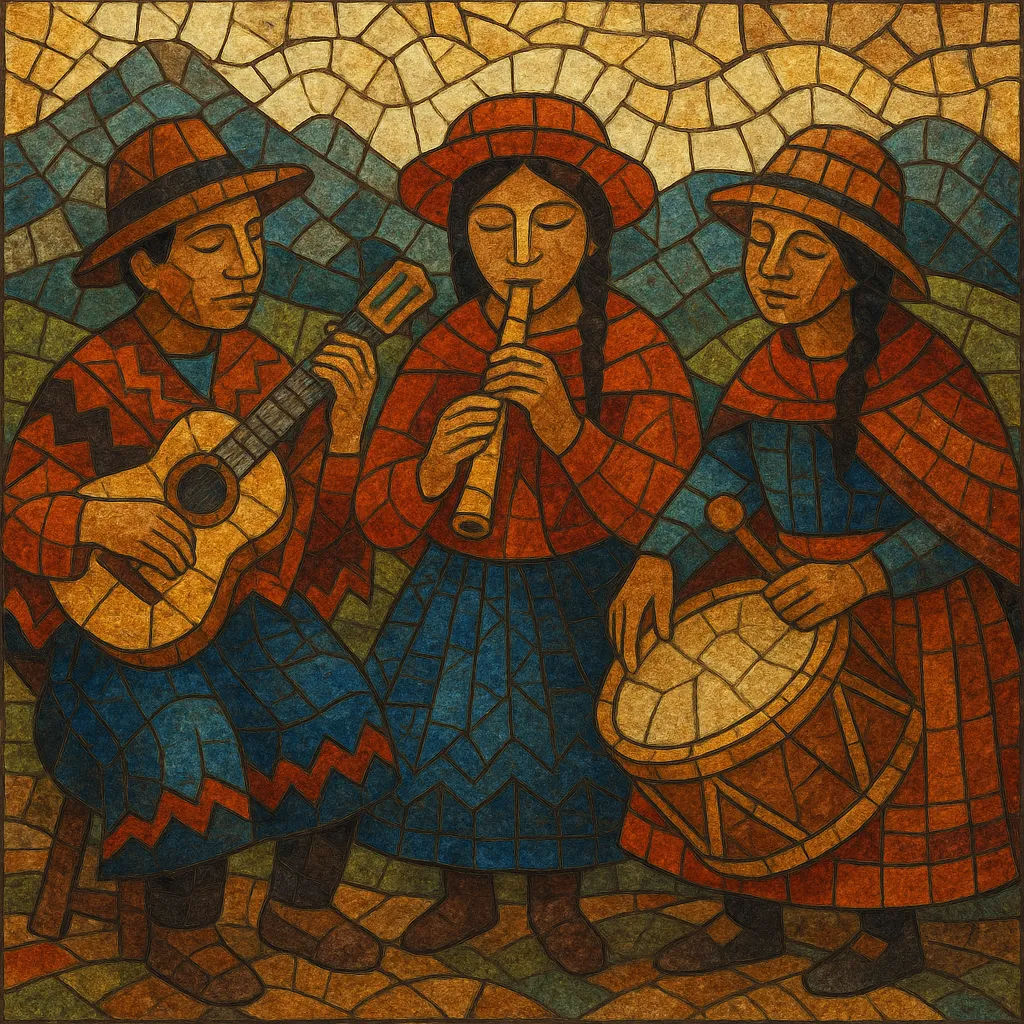Huayno (Quechua: waynu/wayno) is a traditional Andean music and dance style that took modern shape in the Peruvian highlands and spread across Bolivia and Ecuador. It is marked by brisk duple-meter rhythms with a strong downbeat, bright pentatonic melodies, and emotive vocals often sung in Quechua and Spanish.
Typical ensembles feature charango and guitar strumming patterns, soaring quena (Andean flute) and siku (panpipes), lyrical violin or harp lines, and driving bombo or wankara drum pulses. The dance uses lively stomping steps and turns, reflecting festive community gatherings, courtship, and rural life.
Regional variants include the fast, celebratory Huaylas (central highlands), the yaraví-inflected, tender huayno ayacuchano (Ayacucho), and the panpipe- and charango-rich wayno sureño (Cusco–Puno). Lyrical themes span love and longing, migration, indigenous pride, and everyday joys and hardships.
Huayno’s roots lie in pre-Columbian Andean music and dance traditions, with the term derived from the Quechua word "wayñu" (dance). Pre-Inca and Inca ceremonial music, vocal song forms such as harawi, and communal festival dances laid the foundation for its characteristic rhythms, call-and-response textures, and pentatonic melodies.
During the colonial period, indigenous musical practices blended with European instruments and harmonic sensibilities. The adoption of guitar, violin, and harp, along with European-style verse structures, gradually shaped a mestizo art that still retained indigenous scales, timbres, and social functions. By the 19th century, a recognizable huayno style circulated in serrano (highland) towns and market festivities.
In the early to mid‑20th century, internal migration from the Andes to cities such as Lima, La Paz, and Quito brought huayno into urban theaters, radio, and commercial recording. Iconic singers and harp–violin ensembles popularized distinct local variants—fast, celebratory Huaylas in the central highlands; slower, yaraví‑tinged huaynos in Ayacucho; and charango–panpipe textures in the southern Andes.
A "golden era" saw huayno flourish on radio programs, festivals, and 78/45 RPM records. Artists became cultural ambassadors, and huayno turned into a powerful symbol of indigenous identity and pride. As Andean diasporas expanded, huayno resonated with migrant experiences of nostalgia, love, and urban hardship.
From the 1990s onward, huayno interfaced with electric instruments and urban genres, catalyzing Andean hybrid forms and feeding into Peruvian chicha and later electrocumbia. Today, both traditional acoustic ensembles and modern bands continue the style—on festival stages, community dances, and digital platforms—preserving regional idioms while experimenting with pop, rock, and global worldbeat aesthetics.


